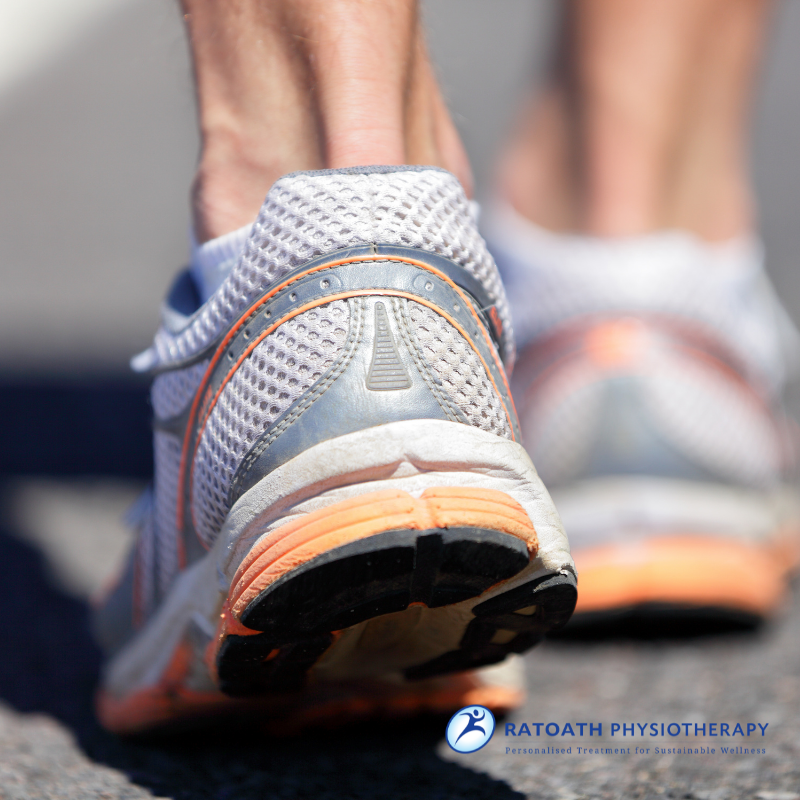What is Achilles Tendinopathy?
Achilles Tendinopathy is a common overload injury which results in pain and dysfunction of the Achilles tendon. Hallmark features include localised, load-dependant pain and morning stiffness/pain. Pain typically worsens with activity and eases with rest. It is common to hear that in runners, there may be some stiffness for the first few minutes of a run which eases over time but that is worse afterwards and/or the next day
Why does it happen?
Achilles Tendinopathy typically occurs where we increase our load rapidly e.g. increasing speed or distance, duration of training, change of terrain etc. It commonly occurs where there is exposure to an unaccustomed exercise or return to exercise following a period of rest. The tendon stores and release energy like a spring. This can be achieved by movements that involve high velocity e.g. running, jumping, or fast change of direction. These are considered high loads. There are three phases of Achilles pain, known as the “tendon continuum”. An acute overload of the tendon results in an inflammatory reaction known as “reactive tendinopathy”. If the tendon is not offloaded at this point and allowed to regress back to a normal state, further cell disorganisation and collagen separation occurs resulting in the “tendon dysrepair” stage. The final stage of progression is known as “degenerative tendinopathy”. At this point there is continued disorganisation within the cell and irreversible degeneration in a portion of the tendon. There may be thickening of the tendon at this point. This is where rehabilitation becomes inherently important as we can adapt and overcome this portion of degeneration by strengthening and increasing the load capacity of the healthy tissue within the tendon.
Will my pain get better with rest?
Yes and no. Tendon pain will subside with rest. However, we have to consider that with rest tissue capacity will be reduced within the tendon. As such, if we return to exercise and apply high loads to the tendon after a period of rest, we will experience more tendon pain. Therefore the key to rehabilitation is to reduce loads that aggravate the tendon and through a graduated exercise programme to slowly strengthen and increase tissue capacity to the required level to complete activity/exercise without aggravation of symptoms.
What does a Physiotherapy assessment involve?
During our assessment, we will ask questions to find out more about your symptoms and to determine possible causes of tendon pain. We will aim to gain an understanding of your past and present activity levels, and any changes in load that may have occurred. We will then observe for any muscle atrophy in the lower limb, gait abnormalities, or any biomechanical changes in the foot. We may perform pain provocation tests such as calf raises or hopping tests to determine your level of function and load capacity. We will complete numerous range of motion and strength tests within the lower limb to determine any imbalances that may be contributing to the tendon pain.
What treatments can help my tendon pain?
As we previously established, a graduated loading programme is important to slowly return the tissue to full capacity. A tissue is at full capacity when an individual is able to perform functional movements at the volume and frequency required without exacerbating symptoms. As such, this will vary from person to person dependent on age and activity levels e.g. A 21-year-old GAA player will require much higher tissue capacity than a 56-year-old who plays golf 3 times a week. We can break rehabilitation in to 4 stages, the length of each will differ based on individual presentations and aims. The training programme is about finding the proper load and safely progressing it slowly, while taking into consideration symptom response. Stage 1 focuses on reduction of pain and involves low loading of the tendon e.g. isometric exercises or heavy slow loading. Stage 2 involves strength training of the lower limb and in particular any deficits that were identified in the assessment. This may include single leg exercises to prevent the tendon ‘hiding’ in the kinetic chain (i.e. prevent other muscles compensating for the painful tendon). In stage 3 and 4, we start to increase load on the tendon and introduce more multi-joint functional exercises. In stage 3 we add velocity to the exercise e.g. we may progress from double leg hopping, to alternate single-leg hopping, to continuous single-leg hopping. It is important not to increase speed and load at the same time. Stage 4 is dependent on the individual’s goals and will involve a graduated return to running/training. At Ratoath Physiotherapy, we also have Shockwave Therapy available which can be a particularly useful adjunct to your loading programme. The shockwave therapy ‘gun’ is applied to the Achilles tendon and produces a strong vibration which penetrates deep into the tissue and directly on to the source of the pain. Shockwave is an irritant treatment which can help to kickstart the healing process. It improves circulation to the tendon and can stimulate collagen synthesis and tissue remodelling. Shockwave Therapy is usually performed over at least 3-5 sessions spaced no more than 10 days apart for the treatment to be effective.











